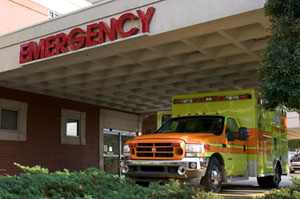When you need emergency care, chances are you aren’t going to pause to figure out whether the nearest hospital is in your health insurer’s network. Nor should you. That’s why the health law prohibits insurers from charging higher copayments or coinsurance for out-of-network emergency care. The law also prohibits plans from requiring pre-approval to visit an emergency department that is out of your provider network. (Plans that are grandfathered under the law don’t have to abide by these provisions.)
That’s all well and good. But there are some potential trouble spots that could leave you on the hook for substantially higher charges than you might expect.
Although the law protects patients from higher out-of-network cost sharing in the emergency room, if they’re admitted to the hospital, patients may owe out-of-network rates for the hospital stay, says Angela Gardner, an associate professor of emergency medicine at the University of Texas Southwestern in Dallas who is the former president of the American College of Emergency Physicians.
“Even if the admission is warranted, you are subject to those charges,” she says.
If you live in a state that permits balance billing by out-of-network providers, your financial exposure could be even greater. In a balance-billing situation, a hospital may try to collect from the patient the difference between what the hospital billed and what the health plan paid for care. Such practices aren’t generally allowed if a consumer visits an in-network provider.
Consumers shouldn’t expect that the hospital will inform them of potential out-of-network coverage issues, so they need to inquire, says Gardner.
“At least being informed and knowing what you’re getting into can set you up to handle it with your insurer,” she says.
And while you’re at it check into being transferred to an in-network facility if it’s feasible.
Please contact Kaiser Health News to send comments or ideas for future topics for the Insuring Your Health column.
